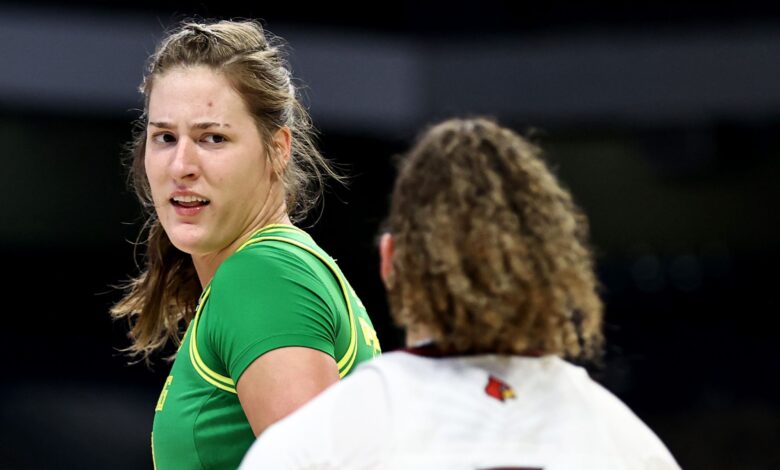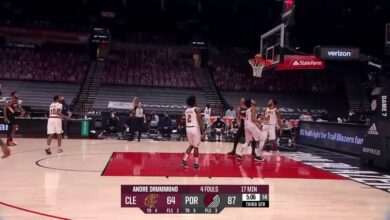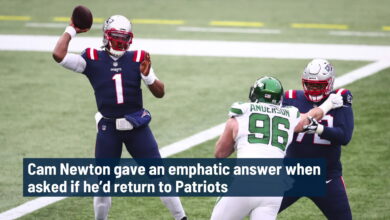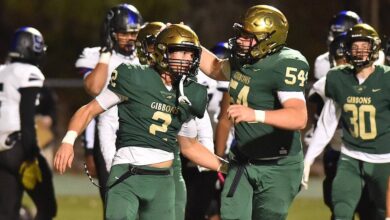How social media birthed new era of women’s sports advocacy

[ad_1]
On March 18, an oft-injured Oregon center walked toward a basketball court in downtown San Antonio. Very few casual sports fans knew Sedona Prince’s name at the time. Prince, though, knew something wasn’t right.
She’d heard about the sprawling weight rooms that men’s college basketball teams were using in Indianapolis.
She looked to the side of her practice court, and saw a solitary rack of light dumbbells, and a couple folding tables, and … emptiness.
Two weeks later, the most powerful people in college athletics are still talking about what Prince saw — and about other, broader, deeper inequities between women’s and men’s sports. Fans are still talking. Media are still talking. Disparities between NCAA basketball tournaments sparked a national reckoning with institutional sexism in sports — a reckoning more forceful, sustained and widespread than ever before, according to longtime sportswomen.
But not because these disparities were particularly egregious. Inequities, both specific and systemic, have always existed.
“We have been fighting this battle for years,” said Hall of Fame coach Muffet McGraw.
“This has been happening forever,” said Nancy Lieberman, one of women’s college basketball’s first superstars in the 1970s.
What’s changed? Why the reckoning now?
“It just came to a head because Sedona had a camera. And she used it,” Lieberman said.
“The thing that has changed it,” McGraw said, “is social media.”
Gender inequity in college hoops over the years
McGraw still remembers the “very obvious differences,” the “stark contrasts” between men’s and women’s basketball accommodations when she first picked up the game. She saw them firsthand in the 1970s and 80s, as a player at St. Joseph’s University, then as a coach at Lehigh and Notre Dame.
“But we did not really care,” she said of the early days. “We were so happy to be playing. … At Lehigh, I never even considered, ‘Oh wait, the men are flying and we’re taking a bus?’ ”
History is drowning in examples. Of motels instead of Marriotts. Of self-paid trips and roadside meals. Of undesirable practice times and ragged uniforms.
As the 80s became the 90s and then the 21st century, more and more women did care, and did push for better treatment. They struggled, though, to find allies who’d listen — in part because the men in charge had nobody forcing them to listen.
At the time, players and coaches had no social media, and often no mainstream media covering their teams. They had no access to the public, so they operated in private. They asked for meetings with athletic directors and university administrators. “It was more backroom conversations,” McGraw said. Coaches would vent about disparities and unequal resources. More often than not, McGraw said, the response was some version of: “You know what, be happy with [what you have], because you’re lucky you have a job.”
And those responses instilled fear in some advocates. “In the past,” Lieberman said, “we the athlete, we the employee, have always felt like there’ll be retribution against us.”
Some lawsuits brought gender discrimination to the public eye. But most women who spoke up weren’t heard. More recently, Nancy Hogshead-Makar, a lawyer and activist who heads Champion Women, sent dozens of letters and legal memos to college administrators. The memos highlighted discrimination with respect to Title IX. Most administrators, she said, simply didn’t respond. Others would say they were compliant, but wouldn’t offer proof.
The project, Hogshead-Makar said, “failed miserably,” just like other battles for gender equity in sports, because power brokers felt little external pressure to heed demands.
Until, that is, advocates could take their demands straight to the public.
How social media has changed the game
Sometime in 2019, Sabrina Ionescu realized that Nike wasn’t selling Oregon women’s basketball jerseys — a prime example of the systemic inequities that suppress the popularity and profitability of women’s sports. Ten years ago, she’d have had to make phone call after phone call just to find somebody at the sportswear company who’d listen.
Two years ago, she simply sent a tweet.
Within days, the jerseys materialized.
Months later, Ionescu and hundreds of fans called out ESPN’s decision to broadcast the WNBA draft on ESPN2. Within hours of their tweets, ESPN reversed course, and moved the broadcast to its main channel.
For decades, unequal media coverage stifled female voices. Research suggests that only 4% of all sports coverage centers women. In the past, even when advocates tried to raise awareness about discrimination, the media’s interest, Hogshead-Makar said, was often “zero. It was a gigantic shoulder shrug.” Executives and administrators, therefore, could shrug along.
But modern athletes no longer rely on traditional media. Social media has allowed them to build their own audiences, less inhibited by the 4% problem. Eight of the 10 most-followed college basketball players in this year’s Elite Eights were women. They now speak directly to audiences that can amplify their messages.
“Everybody has a platform,” McGraw said.
“Before, things would go on, you wouldn’t even know about it,” she continued.
Now, the world knows. And it doesn’t just hear about inequities. It sees them.
‘It’s a movement of transparency and truth’
In interviews, multiple sources compared social media’s impact on women’s sports advocacy to its impact on the movement for Black lives.
“If there were no phones on cameras, do you think there would be the uproar that there is with the murder of George Floyd?” Lieberman asked. “No.”
“If there were no phones with cameras, do you think we would have seen what happened in the weight room in San Antonio?” she continued. “No.”
Omar Wasow, a professor at Princeton University, has studied this subject extensively. “Part of what social media does is allow us to see a reality that has been entirely visible to some people and invisible to others,” he told the New York Times last year. “As those injustices become visible, meaningful change follows.”
And the pattern, he says now, “definitely” applies beyond racial justice.
“The way women’s college basketball players used social media to reveal a particular injustice echoes the work of many activists over decades who have strategically used media to elevate their concerns in the general public,” Wasow said.
“In the past, activists like civil rights leaders often required traditional media like newspaper reporters and television crews to garner coverage for their cause. Now, one person with a smartphone can shine a spotlight on something unjust and — if the image or video sparks concern on social media — directly amplify an issue to a global audience.”
That’s exactly what WNBA players did last summer from their bubble in Bradenton, Florida. It’s what Prince, Stanford performance coach Ali Kershner and others did from their NCAA tournament bubble in San Antonio. More than 10 million people watched Prince’s video on TikTok — where she now has 1.5 million followers. More than 210,000 people retweeted it.
“Social media is powerful,” Prince wrote two days later after the NCAA scrambled to build weight rooms and rectify this piece of its neglect.
Inequities that always existed are now exposable in 2021. A younger, more progressive generation is both willing to and capable of exposing them. “What Sedona did took courage, took guts,” Lieberman said. “But in this last year … I believe that she’s realized that her voice carries power. Her TikTok carries power.” Ditto for hundreds of women athletes across the country.
Social media, Lieberman said, “allows us to actually show people,” rather than just preach to them. “And not just the women’s basketball community gets mad, people around the world are upset. NBA players are upset. Football players, baseball players, can’t believe this.
“There’s a big movement happening right now. And it’s a movement of transparency and truth. And I suspect that people are going to have to get on board.”
More from Yahoo Sports:
[ad_2]
Source link






